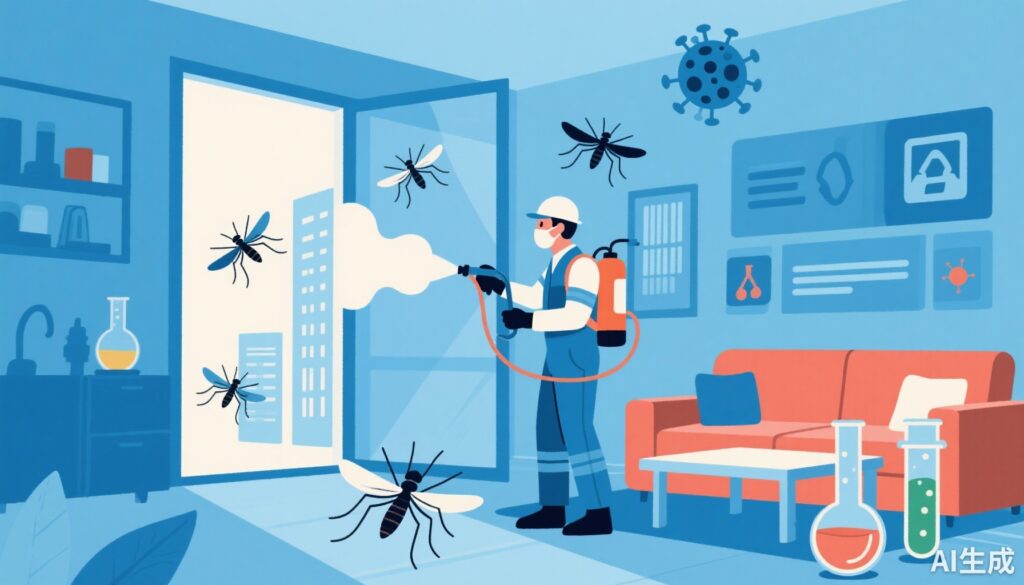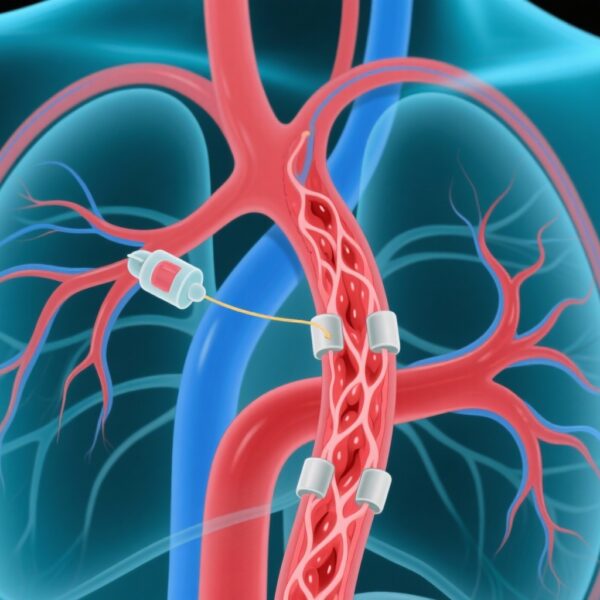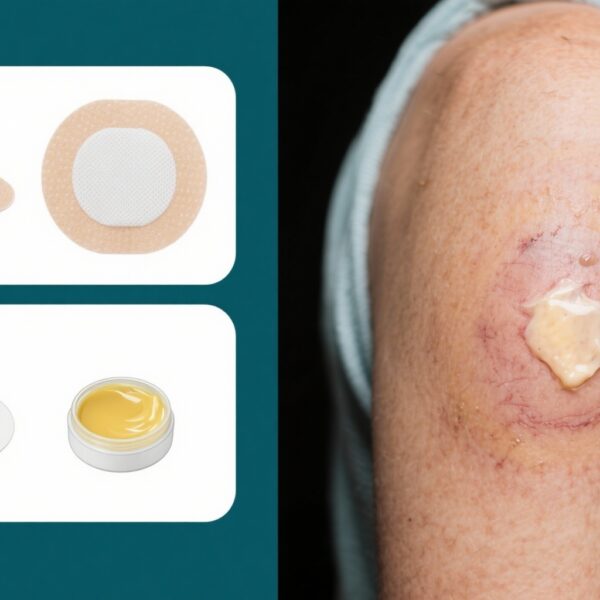Study Background
Aedes aegypti mosquitoes are the primary vectors for transmitting arboviruses such as dengue, Zika, and chikungunya, which pose significant public health challenges globally, especially in urban environments. Conventional vector control strategies, including routine community-wide insecticide spraying, face limitations in efficacy and sustainability, prompting exploration of targeted interventions. Indoor residual spraying (IRS), which involves applying insecticide on walls and surfaces where mosquitoes rest, has historically been effective against malaria vectors, but its utility against Aedes aegypti remains less certain due to differing resting behaviors. The present study investigates whether a targeted IRS approach focusing on common resting surfaces within households can reduce mosquito populations and, ultimately, the incidence of Aedes-borne diseases in Merida, Mexico.
Study Design and Methodology
This investigation was a two-arm, parallel, unblinded, cluster-randomized controlled trial conducted over three consecutive years (2021-2023) in Merida. The study population comprised children aged 2 to 15 years from households grouped into 50 clusters, each encompassing five-by-five city blocks. The clusters were randomly assigned to either the intervention or control arm, with the intervention consisting of an annual targeted indoor residual spray administered before the peak transmission seasons from July through December, in addition to routine health ministry vector controls. All households in the control clusters received only routine vector control measures.
The primary endpoint was the occurrence of laboratory-confirmed, symptomatic Aedes-borne disease (dengue, Zika, or chikungunya). Secondary endpoints included entomologic measures, such as mosquito density inside homes, and community-level impacts assessed through geolocated national disease surveillance data.
Key Findings and Results
Throughout the study period, 4,461 children were monitored, accumulating up to three seasons of data. The key entomological finding was a substantial 59% reduction (95% CI, 51 to 65) in indoor Aedes aegypti mosquito density in the intervention clusters compared to controls.
Regarding disease incidence, a total of 422 laboratory-confirmed cases occurred over the three years, primarily dengue cases in 2023. In the per-protocol analysis focusing on cluster centers, the intervention did not significantly reduce disease incidence: 91 cases among 1,038 participants in the intervention group versus 89 among 1,037 in the control group yielded an efficacy estimate of -12.8% (95% CI, -60.7 to 23.0), indicating no significant protective effect. Similar results emerged from the intention-to-treat analysis at the cluster level, with 198 cases among 2,239 participants in the intervention versus 199 among 2,222 in the control clusters, corresponding to an efficacy of 3.9% (95% CI, -28.1 to 26.7).
Adjusting for factors such as household mobility and demographic variables did not alter these findings. Interestingly, community-level analysis, leveraging geolocated surveillance data, suggested a modest but statistically significant community effect of approximately 24% (95% CI, 6.0 to 38.6) reduction in disease incidence attributable to the intervention.
Safety data indicated minimal adverse events, with only two cases of multisymptom effects such as nausea and watery eyes temporally associated with spraying.
Discussion and Implications
Despite the substantial decline in indoor mosquito densities—the key vector target—the targeted IRS did not translate into a statistically significant reduction in disease cases at the individual or household level. This disconnect raises important considerations. Firstly, the behavioral ecology of Aedes aegypti, which tends to rest and bite outdoors or in spaces not covered by indoor residual sprays, may limit the impact of indoor interventions. Secondly, the rapid turnover of mosquito populations and the presence of extraneous sources of infection can sustain transmission despite reduced indoor mosquito densities.
The modest community effect observed suggests some impact at the population level, possibly through reductions in overall mosquito populations or transmission hotspots. However, these findings highlight the need for integrated vector management approaches combining larviciding, environmental management, and community engagement alongside IRS.
Furthermore, the safety profile of the intervention appeared acceptable, with minimal adverse events.
Limitations
Several limitations merit mention. The unblinded design could introduce bias, although primary laboratory outcomes mitigate this risk. The study was conducted in a specific urban setting, which might limit generalizability. Additionally, variations in human movement and outdoor biting behaviors typical of Aedes mosquitoes complicate intervention efficacy.
Conclusions
In conclusion, targeted indoor residual spraying effectively reduces indoor mosquito densities but does not significantly lower the incidence of Aedes-borne diseases in this setting. These results underscore the complexity of arbovirus transmission dynamics and the need for multi-faceted control strategies. Future research should focus on optimizing integrated vector management, understanding mosquito behavior, and evaluating community-wide interventions to achieve meaningful reductions in disease burden.



